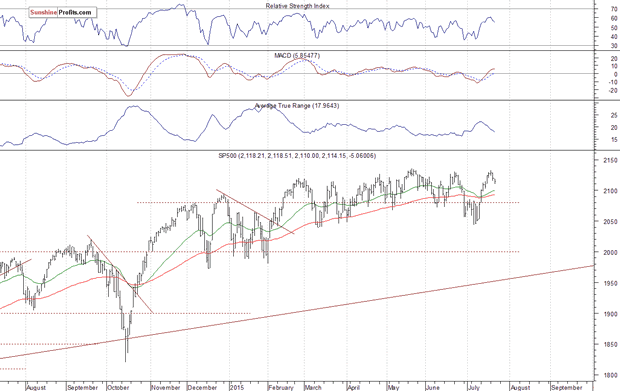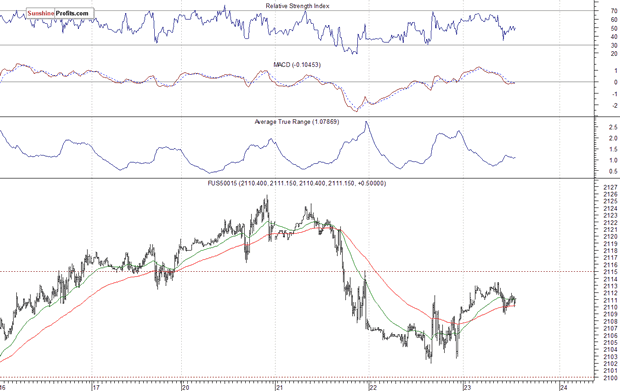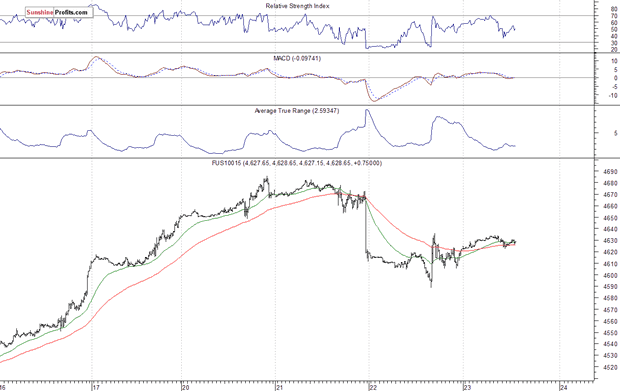Stocks & Equities
“I would highlight that equity market valuations at this point generally are quite high.”
—Janet Yellen
Are you worried about the stock market? If you are, you’re in the minority of investors.
Greece… China… don’t worry about it!
At least that seems to be Wall Street’s reaction to what could have been a catastrophic fall of dominoes if the European and Chinese governments hadn’t come to the rescue with another massive monetary intervention.
If you think you’ve heard the last about Greece or a Chinese stock market meltdown, you’re in the majority. Investors are pretty darn confident about the stock market.

The John Hancock Investor Sentiment Index hit +29 in the second quarter, the highest reading since the inception of the index in January of 2011.
However, overconfidence is dangerous and often accompanies market tops.
If you listen to the hear-no-evil cheerleaders on Wall Street and CNBC, you might be inclined to think the bull market will last a couple more decades, but we haven’t had a major correction since 2011, and the Nasdaq hit an all-time high last week.
Investors are so enthusiastic that the exuberance is spilling beyond stock certificates to the high-brow world of collectible art.

Investment gamblers are shopping up art in record droves. In the last major art auction, prices for collectible art reached all-time highs, and somebody with more money than brains paid $32.8 million for an Andy Warhol painting of a $1 bill.
Who says a dollar doesn’t buy what it used to?
I’m not saying that a new bear market will start tomorrow morning, but I’m suggesting that bear markets hurt more and last longer than most investors realize.
The reality is that bear markets historically occur about every four and a half to five years, which means we are overdue. And the average loss during a bear market is a whopping 38%. Ouch!
On average, a bear market lasts about two and a half years… but averages can be misleading.
In the 1973-74 bear market, investors had to wait seven and a half years to get back to even. In the 2000-02 bear market, investors didn’t break even until 2007.

Unless you, too, have drunk the Wall Street Kool Aid, you should have some type of emergency back-up plan for the next bear market. There are three basic options:
Option #1: Do nothing, get clobbered, and wait between two and a half and 10 years to get your money back. Most people think they can ride out bear markets, but the reality is that most investors—professional and individual alike—panic and sell when the pain gets too severe.
Option #2: Have some sort of defensive selling strategy in place to avoid the big downturns. That could be some type of simple moving-average selling discipline or a more complex technical analysis. At minimum, I highly recommend the use of stop losses.
Option #3: Buy some portfolio insurance with put options or inverse ETFs. That’s exactly what my Rational Bear subscribers are doing, and I expect those bear market bets to pay off in a big, big way.
Whether it is next week, next month, or next year—a bear market for US stocks is coming, and I hope you’ll have a strategy in place to protect yourself.
If you’d like to hear what worries me most about the stock market, here is a link to an interview I did last week with old friend and market watchdog Gary Halbert.

Tony Sagami
30-year market expert Tony Sagami leads the Yield Shark and Rational Bear advisories at Mauldin Economics. To learn more about Yield Shark and how it helps you maximize dividend income, click here. To learn more about Rational Bear and how you can use it to benefit from falling stocks and sectors, click here.

This was not supposed to happen.
After pledging, investing and otherwise guaranteeing the Chinese stock market to the tune of 10% of GDP, and intervening on at least 40 different occasions in the past month ever since China’s stock bubble burst in late June, with the subsequent crash nearly taking the Shanghai Composite red for the year, overnight China officially lost control for the second time, when after a weak start to the Monday trading session, things turned very ugly in the last hour, when the Shanghai Composite plunged by 8.48%, closing nearly at the lows, and tumbling some 345 points for its biggest one-day drop since February 2007 and its second biggest crash in history!


This week, I ran the Abnormal Breaks US scan in search of stocks that came to life after the market has shown little interest in them for some time. A few stocks showed what I call a Bottom Fishing pattern. These occur when a stock that has been in a downward trend for some time breaks higher from a rising bottom after breaking the long term downward trend.
1. VTR
VTR broke higher from a rising bottom on Friday and closed near its high on a day when the overall market was being sold aggressively. Although this stock is still below the very long term downward trend line, it looks like it could make a tradeable short term move higher.

2. LSTR
LSTR has suffered since the end of 2014 but has started to show signs that it wants to resume the long term upward trend. The Sentiment Stockscore has risen back above 60 as the buyers start to show optimism for the stock again.

For Tyler’s whole Newsletter for this week at this link: Don’t See What You Want to See

– Demand driving commodities lower
Faber cites a host of factors including the growing list of companies trading below their 200-day moving average. Iin recent days, “there were [also] more declining than advancing stocks, and the list of 12-month new lows was very high on Friday,” the publisher of The Gloom, Boom & Doom Report told CNBC’s “Squawk Box.”
The downside risk is lower in already depressed markets outside the U.S., he added. Faber has been predicting the meltdown of U.S. stocks for years, only to see the market climb higher. Faber, who lives in Asia, said he sees “no growth” coming from the economies there, with some countries in recession. As a result, Faber does not see much strength coming from the rest of the world. He called the expansion in Europe “anemic.”
The situation in Greece, where the nation is receiving bailouts to pay back borrowed money, is “basically Ponzi finance” that can’t last, Faber said. He’s also concerned about the recent weakness in commodity prices. “Supplies haven’t gone up that much, and do not reflect the price weakness,” he said. “The prices weakness is because of weak demand.” “May be this the signal that there are strong deflationary forces despite all the money printing by central banks,” he added.
also:
Dr. Doom: Demand driving commodities lower


Stock Trading Alert originally published on July 23, 2015, 6:55 AM:
Briefly: In our opinion, speculative short positions are favored (with stop-loss at 2,140, and profit target at 1,980, S&P 500 index)
Our intraday outlook is bearish, and our short-term outlook is bearish:
Intraday outlook (next 24 hours): bearish
Short-term outlook (next 1-2 weeks): bearish
Medium-term outlook (next 1-3 months): neutral
Long-term outlook (next year): bullish
The main U.S. stock market indexes lost 0.4-1.1% on Wednesday, as investors reacted to quarterly earnings releases, economic data announcements. The S&P 500 index remains relatively close to its late May all-time high of 2,134.72. The nearest important level of resistance is at around 2,130-2,135. On the other hand, support level is at 2,100. There have been no confirmed negative signals so far, however, we can see negative technical divergences:
Expectations before the opening of today’s trading session are slightly positive, with index futures currently up 0.1-0.2%. The European stock market indexes have gained 0.1-0.2% so far. Investors will now wait for some economic data announcements: Initial Claims at 8:30 a.m., Leading Indicators at 10:00 a.m. The S&P 500 futures contract (CFD) trades within an intraday consolidation, following yesterday’s rebound. The nearest important level of support is at around 2,100, as the 15-minute chart shows:
The technology Nasdaq 100 futures contract (CFD) trades along the level of 4,630. The nearest important level of resistance is at around 4,635, and support level is at 4,580-4,600, as we can see on the 15-minute chart:
Concluding, the broad stock market retraced some of its recent rally yesterday, as investors reacted to quarterly earnings releases. There have been no confirmed negative signals so far. However, we continue to maintain our speculative short position (2,098.27, S&P 500 index), as we expect a medium-term downward correction or an uptrend reversal. Stop-loss is at 2,140, and potential profit target is at 1,980. You can trade S&P 500 index using futures contracts (S&P 500 futures contract – SP, E-mini S&P 500 futures contract – ES) or an ETF like the SPDR S&P 500 ETF – SPY. It is always important to set some exit price level in case some events cause the price to move in the unlikely direction. Having safety measures in place helps limit potential losses while letting the gains grow.
Thank you.
















